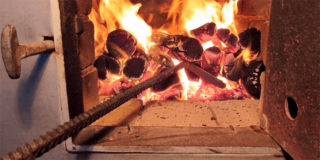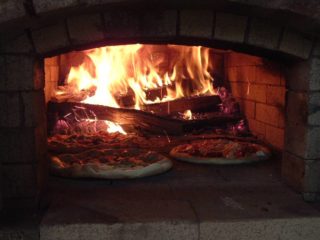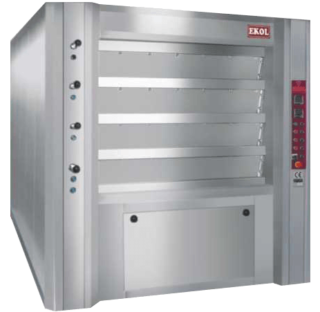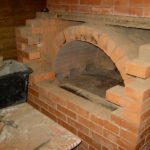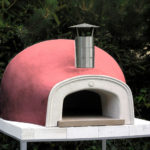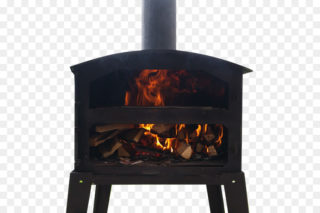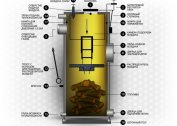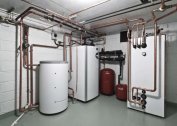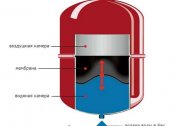Different types of heaters are used to heat private homes. Among these devices are hearth furnaces that do not have an ash pan. In them, firewood is laid on the grate or the bottom. The main scope of application is bakeries and restaurants, but can also be used for heating premises.
Furnace design
The heater consists of several elements, each of which performs a specific function.
- Convection chamber. At the top are valves and shutters.
- Body. The material is steel or chamotte.
- Forward gate valve. It is used to direct smoke into the pipe.
- The main firebox.
- Side furnaces.
- Refractory part. For this, fireclay bricks are used.
- Under.
- Reinforced wall.
- Fireclay brick in combustion chamber No. 4.
- Combustion chamber No. 4.
- Chimney hole
Each model is equipped with a door made of steel or cast iron. A heat resistant window can be made in the center to keep an eye on the flame.
Devices for cooking include grills and burners for installing dishes.
Operating principle
The operation of the hearth furnace is different from the classic. The main property of such products is high efficiency with minimal fuel consumption. Burnout is evenly distributed. Due to the air entering through the furnace door, sufficient oxidation of the wood occurs, increasing the quality of their combustion and the level of heat generation.
Firewood is laid at the lower level in the loading chamber. Then, a combustion process takes place in the working area. Gases are removed from the upper level and heat is exchanged.
To maintain high temperatures (about 400 ° C) the furnace body is made of brushed stainless steel. The calculation is made of fireclay bricks or other fire-resistant material.
Varieties of hearth furnaces
According to the purpose of the oven with hearth heating can be divided into kitchen and heating. For fuel - gas, electric, wood. Brick and metal appliances are distinguished by material.
Kitchen
Kitchen ovens are used for cooking - baking bread or creating confectionery. Differs in miniature and simplicity. Can be installed in a private house. Restaurant models are large and have various additional features.
Heating
Used to heat the room. They do not have separate areas for kitchen baking sheets and furniture. They are distinguished by a high level of safety, environmental friendliness. In Europe, it is the hearth furnaces that are allowed for installation inside residential premises.
Gas
A burner and annular tubes are located in the housing. Their number can reach 19 pieces. In kitchen models, there are 2-5 tiers for installing baking sheets, the temperature is regulated on each floor. You can work with such a product around the clock.
Electric
Outwardly, they practically do not differ from gas-powered models. All differences are within. Instead of a gas burner in the electrical device is a heater. In kitchen appliances, there can also be 2-5 independent temperature-controlled chambers.
From the point of view of safe operation and ease of use, it is more profitable to buy electric furnaces. At the same time, gas is a more economical fuel.
Wood burning
Classic wood stoves have been used for decades. They add coziness to the house, during the burning process a pleasant aroma of wood is heard.Wood is one of the most affordable types of fuel, so such devices are often placed in country houses. The disadvantages include the difficulty of handling. It is necessary to independently add firewood and monitor their burning. Fuel status should also be monitored. The tree should not be wet. Great attention is paid to the choice of breed.
Metal
Metal products are made of cast iron or steel alloy. The positive qualities include ease of installation and maintenance. During operation, the case becomes very hot, so you can not touch it. The service life is about 50 years. Such models do not tolerate temperature extremes, which can cause cracks.
Brick
Brick appliances are characterized by good heat storage and the duration of its return. Outwardly they look stylish and complement the interior. The service life reaches 100 years. Disadvantages - high cost, the difficulty of self-installation. The hearth brick oven should be installed by a professional.
- Brick for bread
- Street wood
- Metal
Advantages and disadvantages
Hearth stoves for heating homes and cooking have positive and negative qualities. The advantages include:
- Possibility of installing several tiers in a kitchen oven and adjusting the temperature of each department. This allows you to cook many dishes at the same time.
- Quick warming up of a large area.
- The ability to create a hearth furnace with your own hands. Ordering, diagrams and drawings are presented on the Internet.
- Environmental friendliness. The furnace does not pollute the atmosphere with smoke. Minimum carbon footprint.
- Simplicity of operation. Complexity can only arise in the handling of wood fuel.
- Durability.
- High efficiency, reaching 82%. The stove can burn for a long time (about 10 kg of wood burns out in 12 hours).
- Safety. The home stove is fireproof under the conditions of use.
Disadvantages:
- Only one heat source may be used in the design.
- Inability to burn with coal, peat and other fuels.
- The complexity of the masonry brick model. A specialist call is required, which requires additional financial costs.
Each of the varieties of hearth furnaces has its pros, cons and features. Compared to classic stoves, they are safer and leakproof, but the efficiency is 3-5% lower. Therefore, the choice between a hearth and a grate furnace is made taking into account the requirements for the device.
Selection recommendations
Hearth stoves for heating a house are selected based on their location. It is necessary to calculate in advance what dimensions the device should have. It is also necessary to ensure that the chimney pipe is at least 1 meter in length. An equally important indicator is power. The higher it is, the better the stove heats. But a powerful device will require more fuel.
Popular models for living quarters:
- Fireplace stoves WGO. Made in Germany and made from HBO + refractory chamotte.
- ECO + oven. It has a simple design and low cost. It is made of refractory materials.
To heat a non-residential premises (bathhouse, garage), you also need to select a model for power and size. Externally, such hearth bath stoves look less attractive, but their cost is lower. It is recommended to take furnaces of the KIV, PKO-40 series. They are able to heat the room to the desired level without serious fuel costs.
Features of use
The furnace is easy to operate. To warm up the product, do the following:
- Load pallets into a wood stove. The gas and electric models are connected to the gas duct and the power grid, respectively.
- Dry the heater after downtime in an electric furnace.Other types can be immediately included.
- Select the desired program mode.
- Preheat the chimney for 6-7 minutes.
- Check the thermostat. The temperature is maintained automatically in most modern models.
If the oven is used for cooking, you need to open the lid and immerse sheets of kitchen utensils in the chamber. After the end, the device turns off. You should not keep it operational for more than an hour.

